Creating OHLC Visualizations
In this tutorial, you will learn how to create a OHLC chart visualization using a sample spreadsheet.
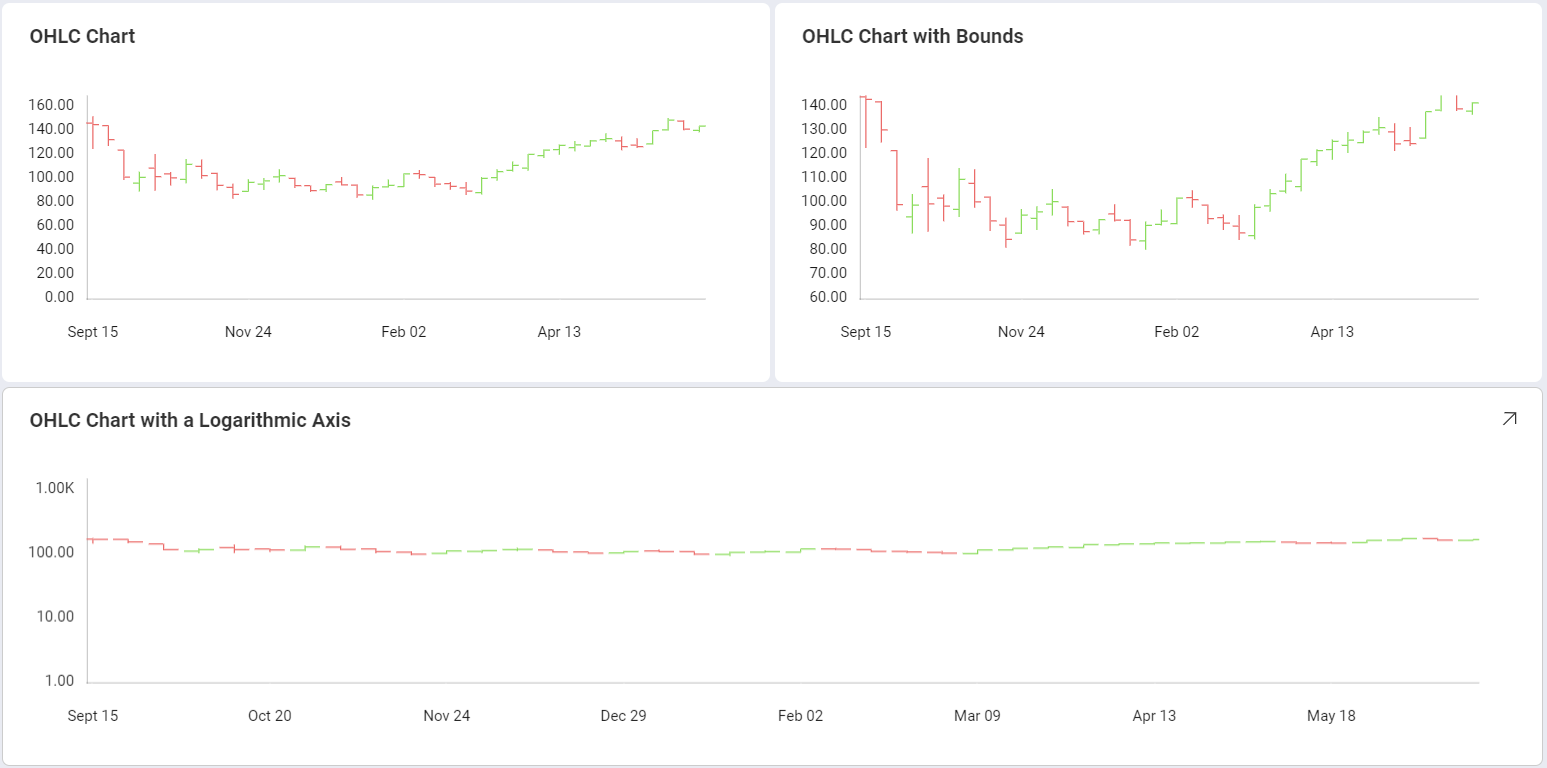
Access the links below for the OHLC chart view walkthroughs:
Key Concepts
Like Candlestick Charts, OHLC charts are meant to show the opening, high, low and closing prices for any financial data. They are particularly useful for financial scenarios and stock movement analysis. This chart displays numerical values in vertical axes with the two horizontal lines in each vertical axis representing the Open and Close values.
OHLC charts, therefore, require:
One field to be dropped into the Label placeholder of the data editor, generally related to dates.
Four different fields in the Open, High, Low and Close categories of the data editor.
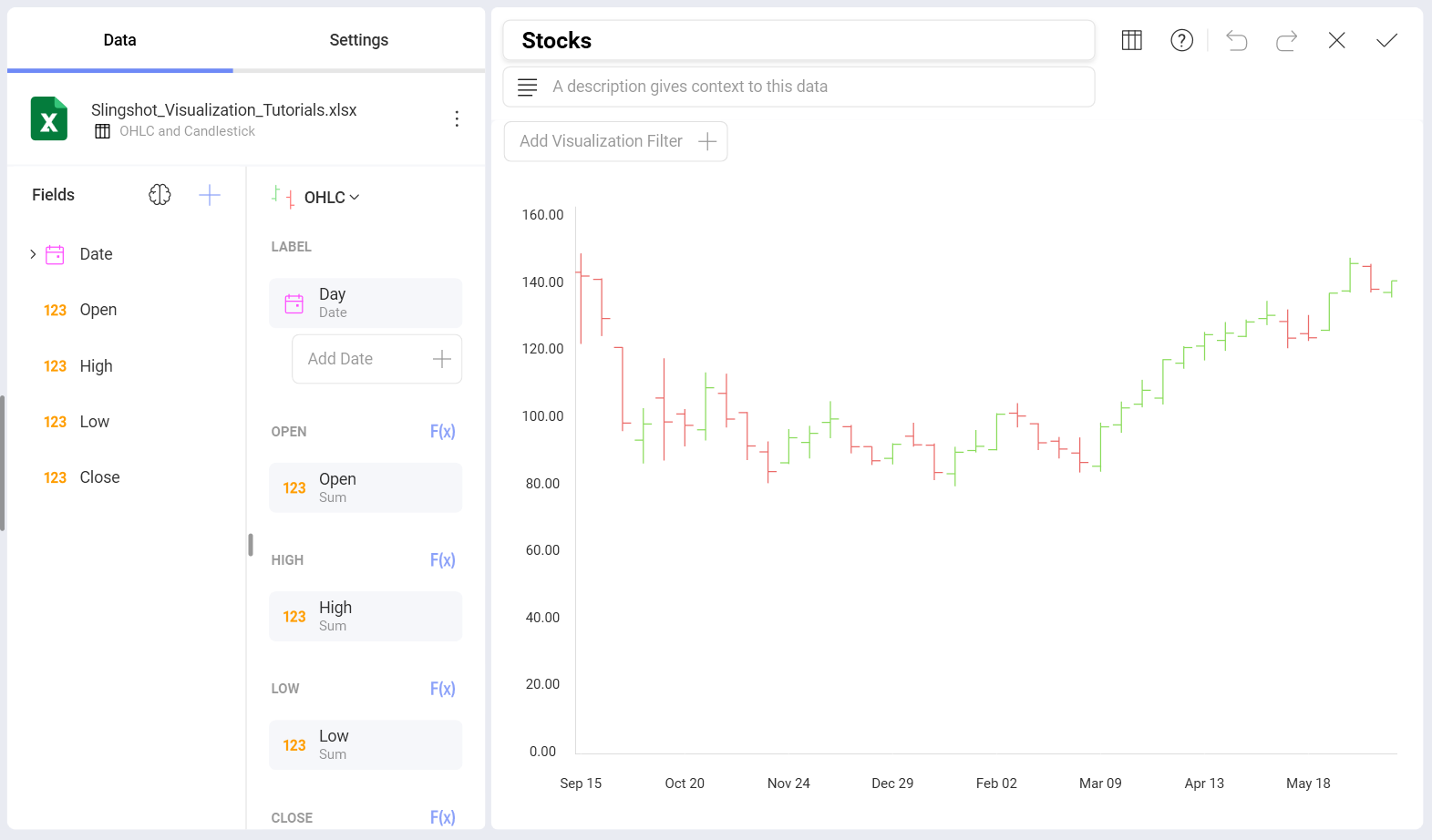
There are also different options to add further information to your chart:
Axis Configuration: the axis configuration lets you configure the minimum and maximum values for your charts. The minimum value is set to 0 by default and the maximum calculated automatically depending on your values.
Logarithmic Axis Configuration: if you check the Logarithmic checkbox, the scale for your values will be calculated with a non-linear scale which takes magnitude into account instead of the usual linear scale.
Sample Data Source
For this tutorial, you will use the OHLC and Candlestick sheet in the Slingshot Visualization Tutorials.
Note
Excel files as local files are not supported in this release. In order to follow these tutorials, make sure you upload the file to one of the supported cloud services or add it as a Web Resource.
Creating a OHLC Chart
Depending on where you want to save the dashboard, you can open a dashboard list in My Analytics, a workspace or a project. You can always move the dashboard to another location later on.
Click/tap on the + Dashboard button.
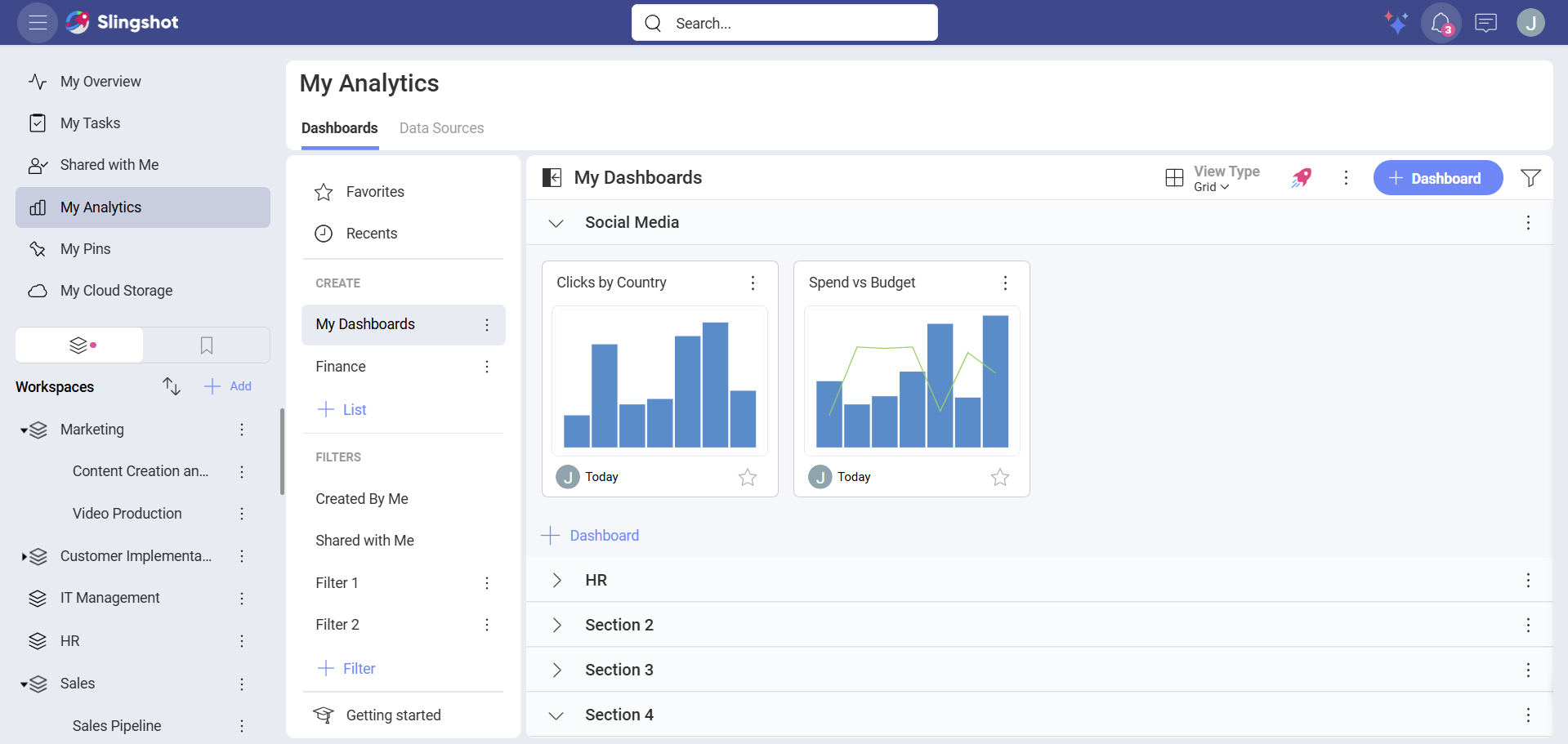
Select your data source (Slingshot Tutorials Spreadsheet) from the list of data sources. If the data source is new, you will need to first add it from the + Data Source button in the top-right corner.
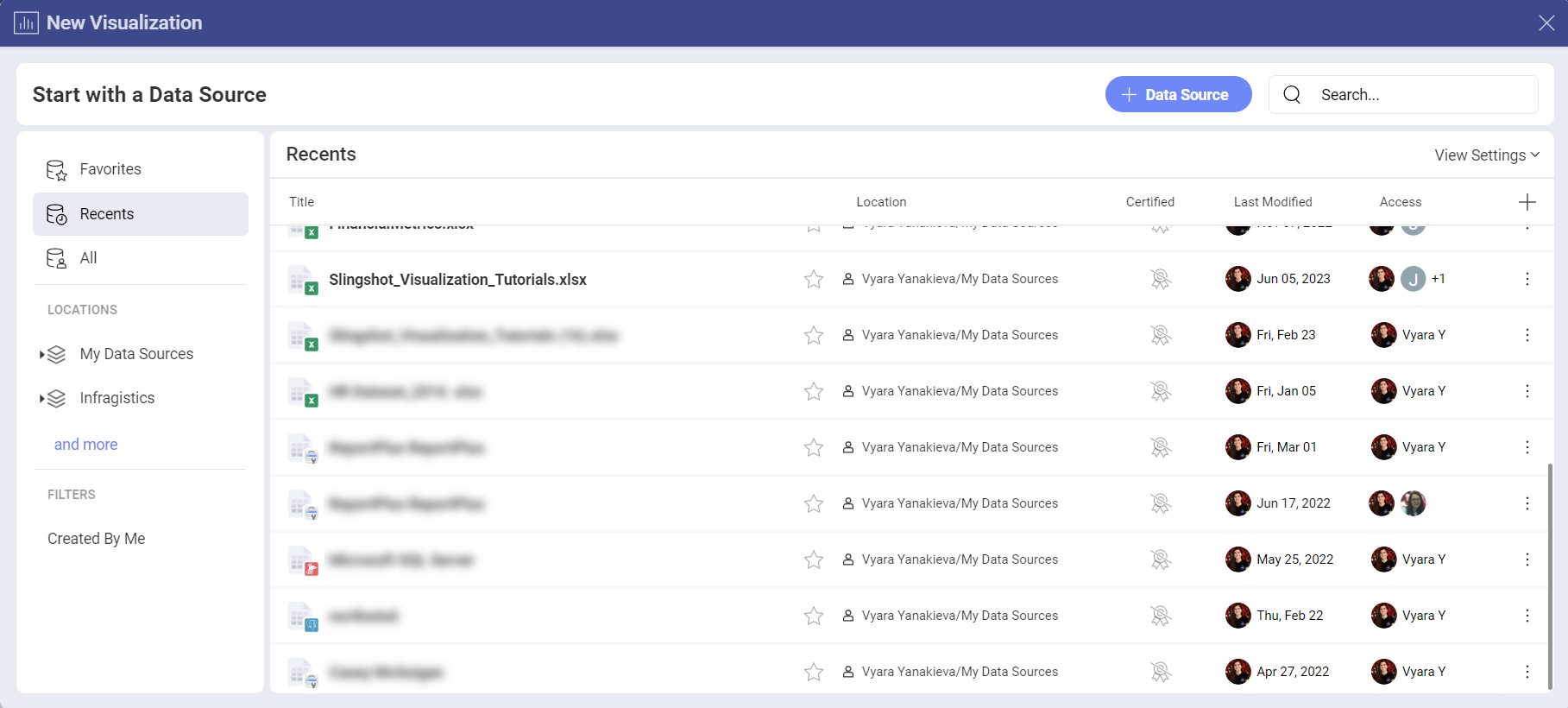
Choose the OHLC and Candlestick sheet.
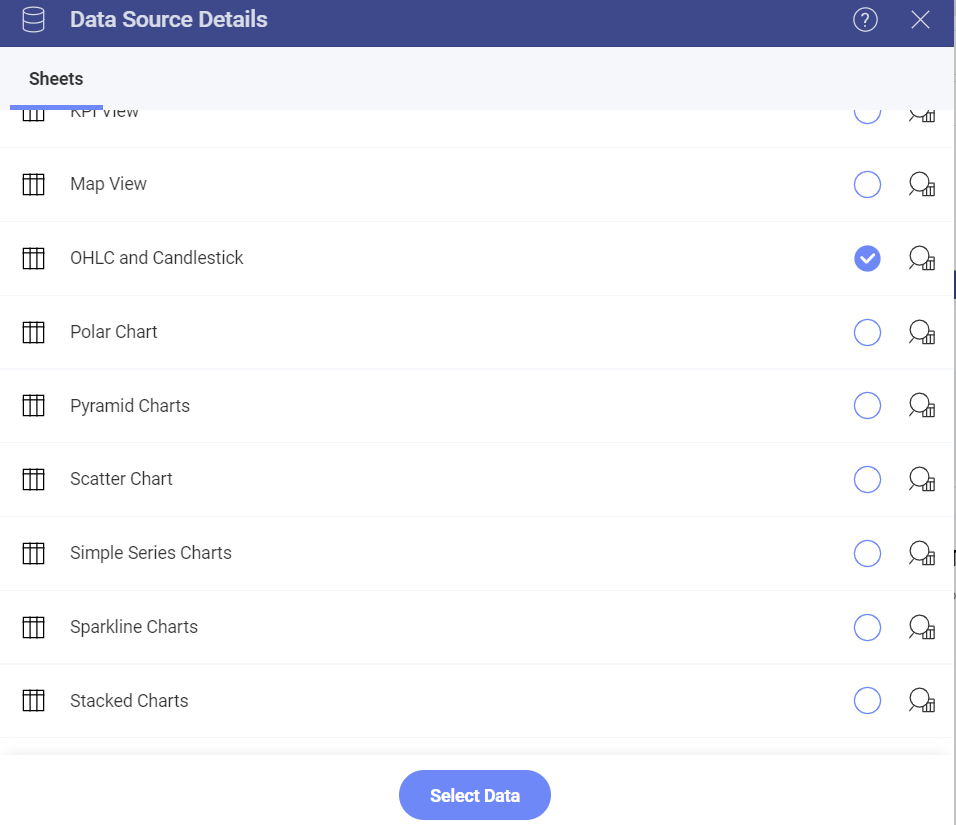
Open the Visualization Picker and select OHLC. By default, the visualization type will be set to Column.
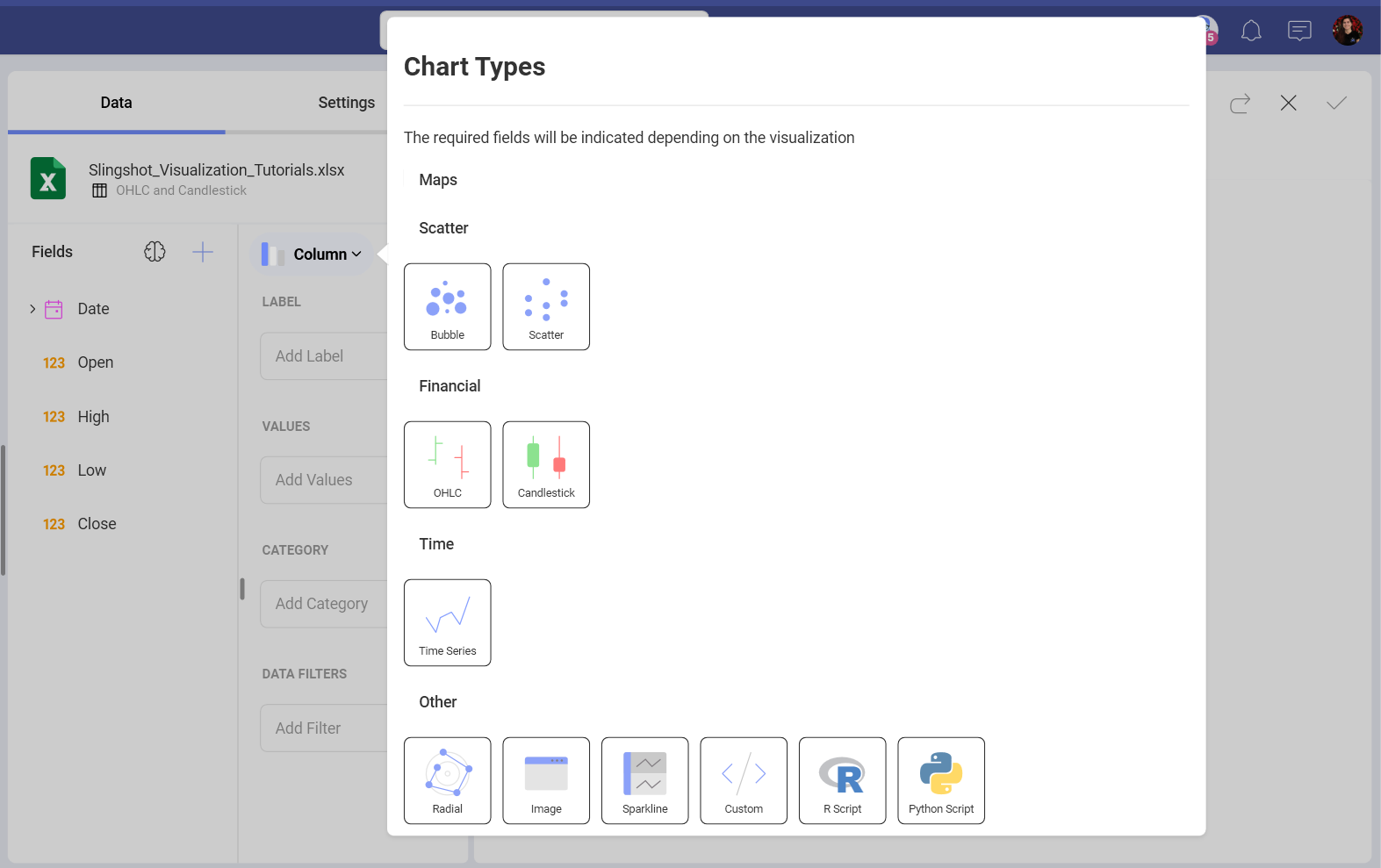
Drag and drop the Date field into Label and the Open, High, Low and Close fields in their corresponding placeholder.
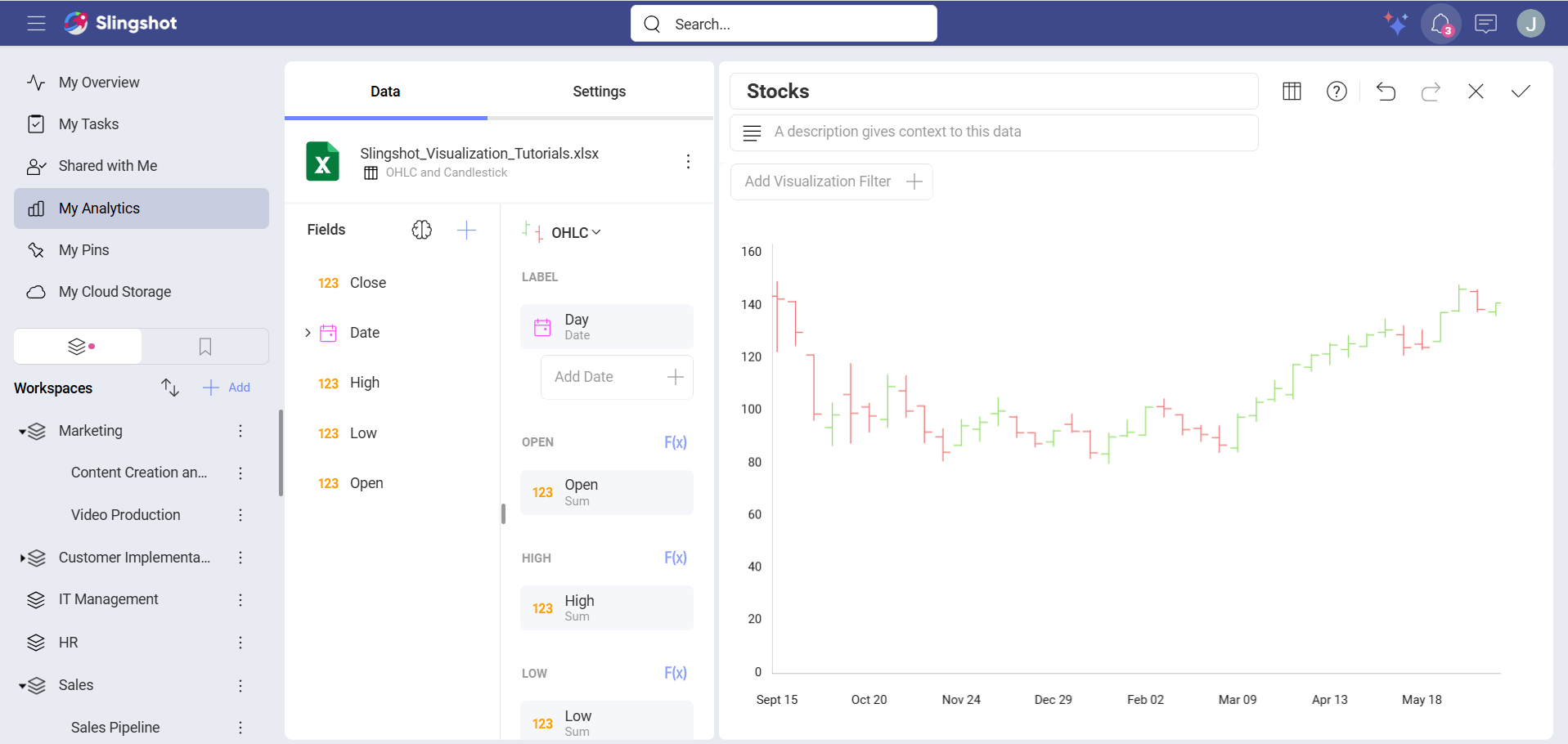
Changing your Axis Configuration
Like Gauge bounds, chart axis configuration allows you to set the lowest and highest values in your chart. You can use this feature to include or exclude specific data.
In order to access the axis configuration menu:
| 1. Access the Settings Menu | 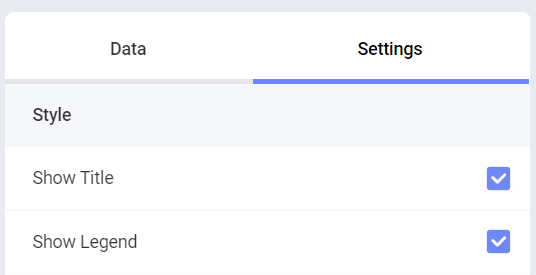 |
Go to the Settings section of the Visualization Editor. |
| 2. Navigate to the Axis Bounds section |  |
The settings you will change will be the Axis Bounds. |
Depending on whether you want to set the minimum or maximum value (or both), you will need to access one of the following options:
Changing the Minimum Bound
The default value is set to 0. In order to set a different bound, enter the value you want the chart to start with.
Changing the Maximum Bound
For Maximum bounds, the default will be set to Automatic so that Slingshot uses your original data. In order to set a different one, enter the value you want for the chart's top limit.
Setting your Axis Configuration as Logarithmic
| 1. Access the Settings Menu |  |
Go to the Settings section of the Visualization Editor. |
| 2. Change the Axis to Logarithmic | 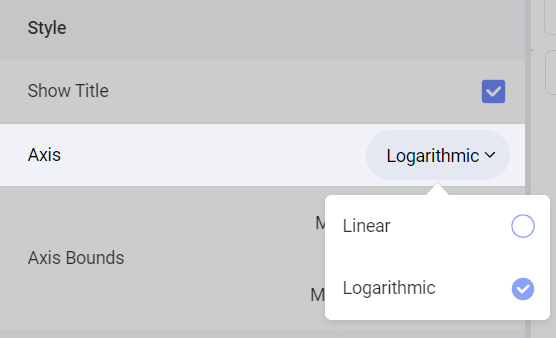 |
Open the Axis dropdown and select Logarithmic. |
